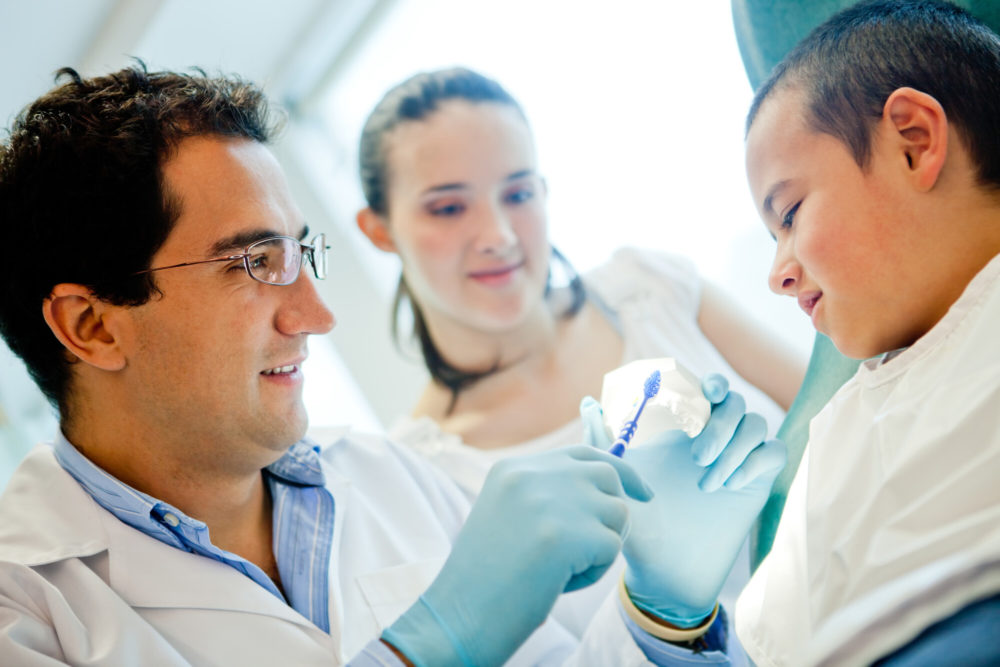
A recent study found that 45% of children will need braces at some point in their lives. But many parents are not completely informed on the ins and outs of children’s dental care.
Luckily, this article talks about the importance of facing the best orthodontist for kids. And the best time to visit an orthodontist. So keep reading to learn more about your child’s dental health!
A pediatric orthodontist specializes in teeth straightening by using braces and other dental tools. Pediatric orthodontists can also help correct jaw abnormalities that form during early childhood.
Lastly, a pediatric orthodontist may also treat children with crowded mouths, and irregular tooth developments. Many of which are caused by thumb sucking and a child’s genetic material.
Naturally, many children and even parents get really nervous when visiting the orthodontist. So here are some tips that may help you and your child:
All of these are simple steps you can take to get your child excited and comfortable with children’s dental care. However, if your child is more anxious about a visit, give them words of affirmation and lots of love!
Children’s dental care should be taken very seriously to avoid future complications. And although every child is different, the best time to visit a pediatric dental clinic is before the age of seven.
During this time, your child is rapidly developing. And more often than not, they will develop oral fixations which may lead to abnormalities.
For example, thumb sucking, nibbling, or biting may lead to overlapping teeth and jaw issues. And if not taken seriously, these issues can contribute to a lower appetite, impaired speech patterns, and even pain.
And even if your child does not have any visible concerns, it’s still important to take your child to a good Hendersonville pediatric dentistry before the age of seven.
Doing so will help spot any unnoticeable teething issues. And it will set your child up for success in the future because they will be used to a pediatric dental clinic from an early age. Therefore, they won’t develop any irrational fears of the dentist.
The first time you visit a pediatric dental clinic you can expect to fill out some paperwork. This step does not take long and can be done in the waiting room.
Once everything has been filled out, your child will be called by the technician. It is up to you if you want to accompany your child or not. However, once the x-ray starts, you will have to wait outside the room.
X-rays are taken to get a better look at the state of your child’s teeth and jaw. They are also painless and can take as little as 2 to 5 minutes.
The orthodontist may also create a mold of your child’s teeth. This mold will help the orthodontist create a plan for straightening your child’s teeth if needed.
During the molding process, the orthodontist will also examine the mouth, jaw, and individual teeth. During this, your child will be asked to open their mouth as wide as they can. Or they may ask your child to bite down on their teeth.
These exercises will help the orthodontist get a better idea of your child’s oral movements. After all of these steps, the orthodontist will take examine everything and create a plan.
It’s possible that your child will need braces or other correctors. But in some cases, no treatment will be needed. However, your orthodontist may ask you to come back in a few months to see if any changes have occurred.
Braces work by applying inward pressure on the teeth using metal alignments. Over time, this pressure causes the teeth to straighten and the jaw to realign.
Braces are usually in place for 1 to 5 years depending on the severity of the overlaps. And within this time frame, braces do require maintenance.
For example, they must be thoroughly cleaned every day. And they must be re-tightened and checked every few weeks. Therefore, you will need to visit your orthodontist regularly.
Once the teeth are lined up properly, they will be taken out. And they must follow further instructions to keep their teeth straight. For example, it’s best they must wear their retainer.
This device will ensure the teeth do not re-separate after their braces are taken off. They must also keep up with their dental hygiene and have regular pediatric dental checks. All of these steps will ensure your child’s teeth and jaw stay straight for a lifetime!
Braces become more effective when they are placed in early adolescence. So it’s important to know the early signs so your child can get treatment immediately.
One of the first signs that your child may need braces is if they have an overbite. An overbite occurs when the maxillary central incisors grow past the mandibular central incisors.
And when left untreated, overbites can cause impaired speech and misaligned teeth. There are also cases where a child may have an underbite.
In these cases, the mandibular central incisors grow past the maxillary central incisors! And they cause jaw, speech impediments, and also teeth misalignments.
Both of these cases should be treated at an early age. Not doing so will damage the teeth and jaw even more. Therefore, the longer you wait, the longer the braces will need to be in place.
An orthodontist for kids can help achieve a beautiful and healthy smile. So don’t wait any longer and get your child in with one of the best Hendersonville pediatric dentistry offices!
So contact us today and book an appointment.